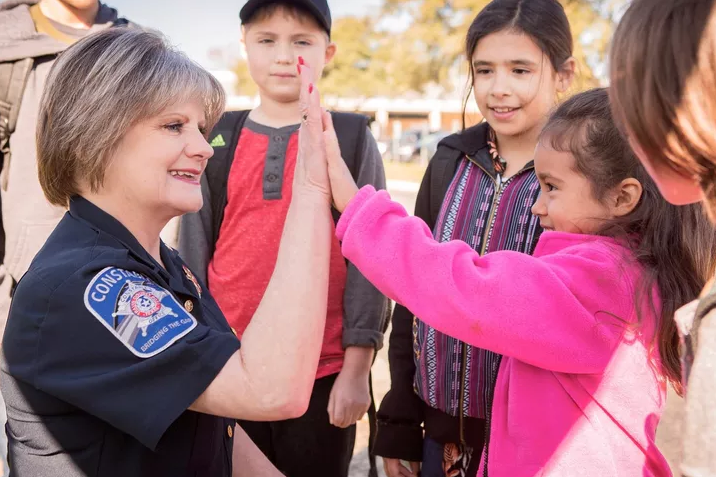Austin Poised to Become First “Sanctuary City” In Texas

*A candidate for Sheriff in Austin, Texas, vows to “get ICE out of Austin.” VL
By Jay Root, Texas Tribune (7 minute read) 
Conservatives already love to bash Austin — that bag-ban loving, Uber-hating, Democrat-electing enclave in the center of the most Republican mega state in the country.
Now the Texas capital city is poised to get the biggest target yet on its back: it is likely to become the first true “sanctuary city” in GOP-ruled Texas.
In a move that would defy not just Republican orthodoxy but also the Obama administration’s policy on deporting criminal immigrants, the county where Austin sits is on the verge of ending cooperation with the federal government on immigration matters.
That’s because the Democratic candidate for Travis County sheriff, Constable Sally Hernandez, has promised to get U.S. Immigration and Customs Enforcement, or ICE, out of the county jail. More specifically, she says she won’t hold inmates for ICE when the federal agency seeks to remove them from the country.
“I just don’t think you solve the criminal justice process by deporting them,” Hernandez told The Texas Tribune during a sit-down interview in her office this week. “We talk about being progressive. I believe we need to lead the way.”
Hernandez has a GOP opponent, Joe Martinez, who favors cooperating with ICE by holding immigrants the agency wants, as does the current sheriff of Travis County, Democrat Greg Hamilton. But with Donald Trump at the top of the Republican ballot and local politics being what they are — i.e., heavily stacked against anyone with an R next to their name — Hernandez is all but a shoo-in.
For his part, Martinez said if elected he would tweak current rules at the jail and only hand over the worst offenders to ICE, so changes are coming no matter which one of them is elected. But the Republican candidate opposes the adoption of a blanket policy of refusing ICE’s “detainer” requests — the process by which the agency asks local jails to hold potentially deportable inmates so the agency can come pick them up.
“How can you release somebody back into the population to do more harm? Where is it going to stop? When you hurt or maim and kill somebody? An American citizen or another immigrant? The federal government has a job to do,” he said. “Let’s let them do their job.”
The differences between the two sheriff candidates mirror a deep electoral divide that has animated the presidential election, where Trump has attracted support with his fiery rhetoricagainst immigrants and Hillary Clinton is wooing her base with a promise to adopt more lenient deportation policies than the Democrat she wants to succeed.
But the debate in Travis County will soon move past sound bites and theoretical policy changes and into concrete reforms sure to dramatically change procedures for immigrants at the jail — and no doubt provoke an angry response from GOP legislators already itching to ban “sanctuary” jurisdictions. Under current policy, the Travis County sheriff’s office honors ICE “detainers,” or civil requests to hold a potentially deportable prisoner who would otherwise be free to leave.
In some counties inmates are held for up to 48 hours — potentially a tad longer if the request covers all or part of a weekend. But in Travis County, ICE comes twice a day to pick up detainees, so generally they are handed over to the federal agency within a few hours of being released from custody on local charges, officials say.
Hernandez, who would take office in January, wants to change that. She said she will “no longer hold individuals in the Travis County jail who don’t have pending charges.” She said the reforms will make the county safer by encouraging more immigrants, now afraid of deportation, to help authorities solve crimes.
“Immigration is a federal issue, and immigration is a broken system and it’s really up to them to fix it and to enforce it,” Hernandez said, adding that such policies at the jail were “breaking up families and leaving children home here in the United States with no income.”
Hernandez also mentioned the infamous Kate Steinle case. Steinle was shot and killed on Pier 14 in San Francisco. Her alleged killer: an undocumented Mexican immigrant with a long rap sheet who had been deported multiple times previously. The Steinle case became a major flashpoint in the already hot immigration debate after it was revealed that the alleged killer was released from jail by local authorities who rebuffed a request from federal immigration authorities to notify them before his release.
San Francisco County is among the “sanctuary cities” that limit or, in some cases, forbid local police and jailers from cooperating with ICE to catch and detain immigrants sought by the agency.
While “sanctuary city” opponents cite Steinle’s killing as proof that such policies endanger the public, Hernandez said the case instead proves that their proposed fix — removing such offenders from the country — doesn’t work.
“If deporting people solved the problem, that wouldn’t have ever happened. But unfortunately, deporting people — they come back to the United States,” Hernandez said. “It’s not working and so we’ve got to fix it, but at the same time we can’t throw that burden on the local community and on their resources and on the families.”
But A.J. Louderback, Republican sheriff of Jackson County and legislative director of the Sheriffs Association of Texas, said people in the law-and-order business shouldn’t gamble with the lives of innocent citizens by releasing onto the streets people ICE wants to deport.Daily lists of potentially deportable immigrants from the Travis County jail in the past few days feature people charged with crimes ranging from sexual abuse of a child to DWI.
“We can’t predict what Texas citizen is going to be impacted by a criminal act by someone that we release from jail who is already here illegally,” Louderback said. “The best thing for us to do is do our job, honor federal detainers and be on the right side of this.”
If Hernandez enacts the policy changes as promised, it would put Austin in a unique category. There is no standard definition for “sanctuary city,” but ICE tracks local law enforcement agencies that have policies limiting cooperation — the majority of which are in California. To date, no Texas County has adopted a policy of declining all ICE civil detainer requests at its jail as Hernandez proposed on the campaign trail, according to recent lists compiled by the federal agency.
Read more NewsTaco stories on Facebook. >>
The Legislature is already gearing up to pass a bill banning sanctuary city policies — an initiative that has previously failed. Austin, which in recent years riled GOP politicians with laws such as a ban on disposable plastic bags and mandatory ride-share background checks that prompted Uber and Lyft to pull out of the local market, is likely to be Exhibit A in deliberations on the sanctuary city bill early next year.
Sen. Charles Perry, R-Lubbock, who plans to author a sanctuary cities bill in the 2017 Legislature, said local jurisdictions that don’t cooperate with federal immigration authorities face losing state money — and lots of it.
“If they do this it will cost them financially as well as public sentiment, which is on the side of doing what’s necessary to shore up our border and protect the citizens here,” he said.
Whatever happens in the Legislature, Hernandez appears to be on firm ground locally. In 2014, both the Austin City Council and the Travis County Commissioners Court approved a symbolic measure calling for an end to cooperation with ICE.
Austin City Councilman Greg Casar, a fierce advocate of cutting ties with ICE at the jail, said he welcomes a healthy and vigorous debate about how to deal with incarcerated immigrants at a time when the U.S. Congress has repeatedly deadlocked on comprehensive immigration reform.
“Some people may disagree with Austin voters’ decision on how to make ourselves a safer community,” he said. “If we’re scared of talking about it because someone might disagree, then we’ll never advance as a community.”
This article was originally published in The Texas Tribune.
[Photo courtesy of Sally Hernandez for Sheriff/Facebook]

